Whether you’re a seasoned real estate photographer or an agent dabbling in photography, understanding the terms associated with real estate photo editing is crucial.
Below are 27 common terms you’ll encounter, along with explanations of what each term means and actual examples. We’ll also cover some frequently asked questions and answers at the end.
Let’s get started!
27 Common Real Estate Photo Editing Terms You Must Know

Here are 27 common real estate photo editing terms you need to know when honing your craft.
These terms can also be good when requesting photo editing from a professional editing service.
1. Perspective Correction
Perspective correction is about adjusting the angles of a photo to ensure that vertical lines appear straight.
This is especially important in real estate photography to avoid distorted images where buildings look like they are leaning.
Examples: You can simplify scenes with smart cropping. By trimming the edges of your image, you ensure your viewers’ eyes are drawn directly to the real estate masterpiece you’re showcasing.
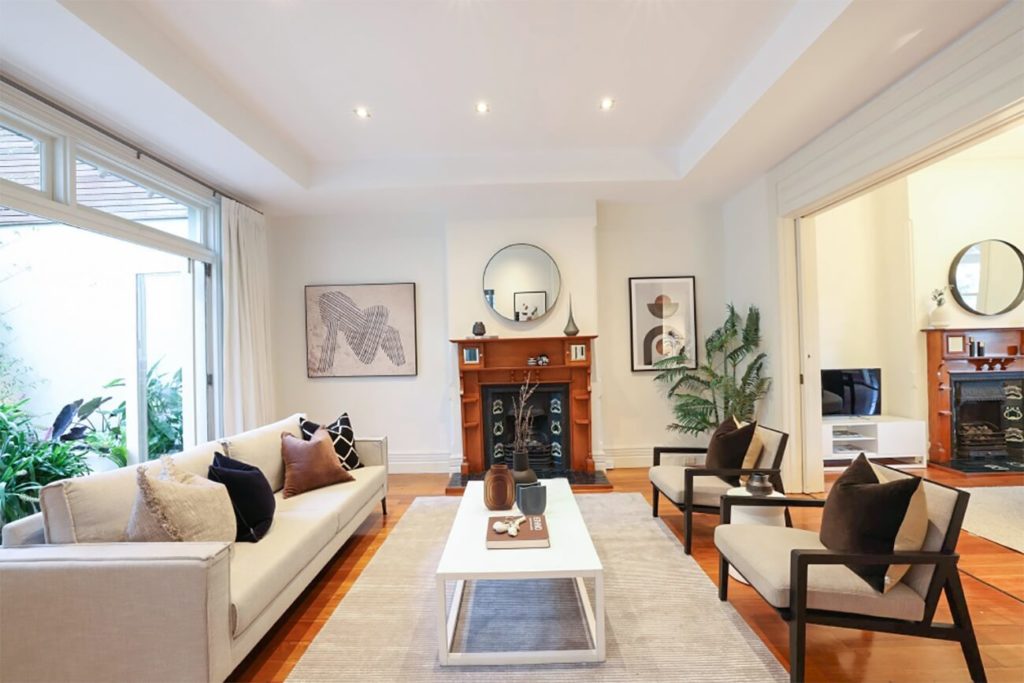
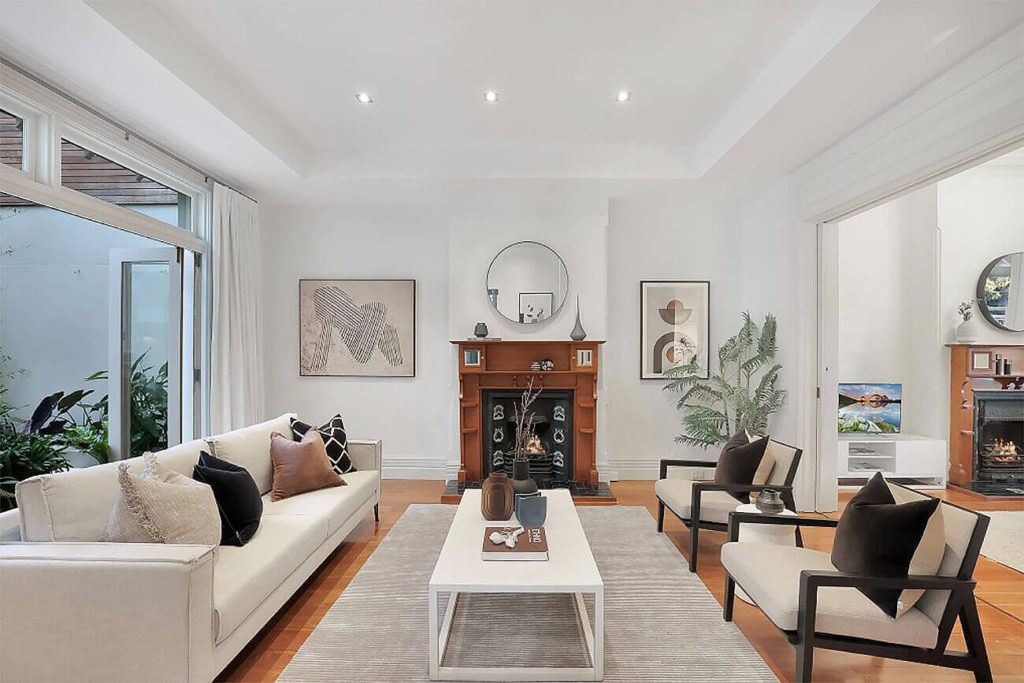
You can also straighten verticals in a real estate photo that looks distorted as shown in the video:
2. HDR Blending
High Dynamic Range (HDR) blending combines multiple photos taken at different exposures to create one image with a balanced exposure, capturing details in both shadows and highlights.
Example: Merging three photos of a room taken at different brightness levels to produce a well-lit image with visible details both inside and outside the windows.


For more information, this video demonstrates how to edit HDR photos:
3. Sky Replacement
Sky replacement means replacing a dull or overcast sky in a photo with a more visually appealing one.
This enhances the overall aesthetic of the exterior shots of properties and can help to capture viewers’ attention.


Example: Swapping a grey, overcast winter sky with a vibrant blue one with fluffy clouds to make the property look more inviting:
4. Twilight Conversion
Twilight conversion is about turning a daytime exterior photo into a dusk image to make it look like it was taken during twilight, showcasing the property in a warm, glowing light.
This technique adds a romantic and mysterious glow to your images. This combined with cozy interior lighting is very appealing to viewers and can help sell a property faster.
Example: Adding warm tones and adjusting shadows to a daylight photo, making it appear as if it was taken just after sunset:


5. Color Correction
Color correction is about adjusting the colors in an image to make them appear more natural and consistent, correcting for any color casts caused by lighting conditions.

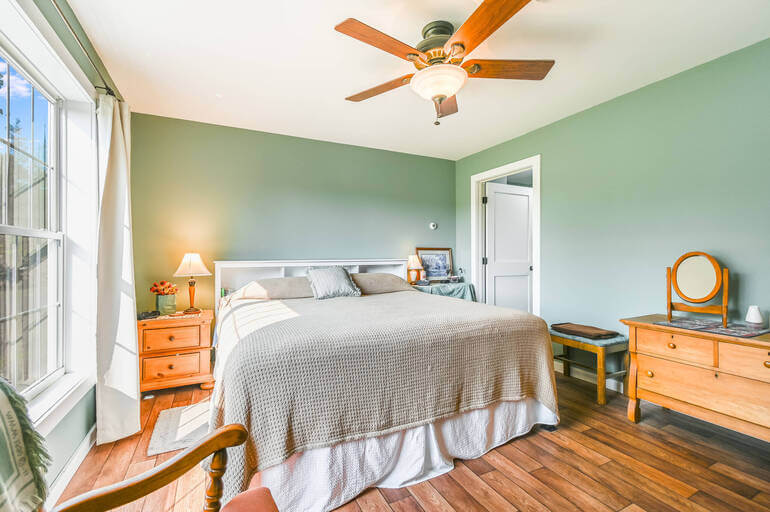
Example: Fixing the bluish tint in an indoor photo to make the colors look more natural and true to life:
6. Decluttering
Decluttering means removing unwanted objects or distractions from a photo to present the property in its best light.
You can do this either by object removal techniques in Photoshop or through virtual staging (we’ll explain this term in the next section).


Example: Editing out cords and wires in a room to create a cleaner, more appealing image:
7. Virtual Staging
Virtual staging entails digitally adding furniture and decor to an empty room to help potential buyers visualize the space.
With virtual staging, you can cater to any audience and help them see the property’s full potential.


Example: Adding a sofa, coffee table, and artwork to a photo of an empty living room to show how it could look when furnished:
8. Noise Reduction
Noise reduction is about reducing the graininess or speckling in an image, often caused by shooting in low-light conditions.
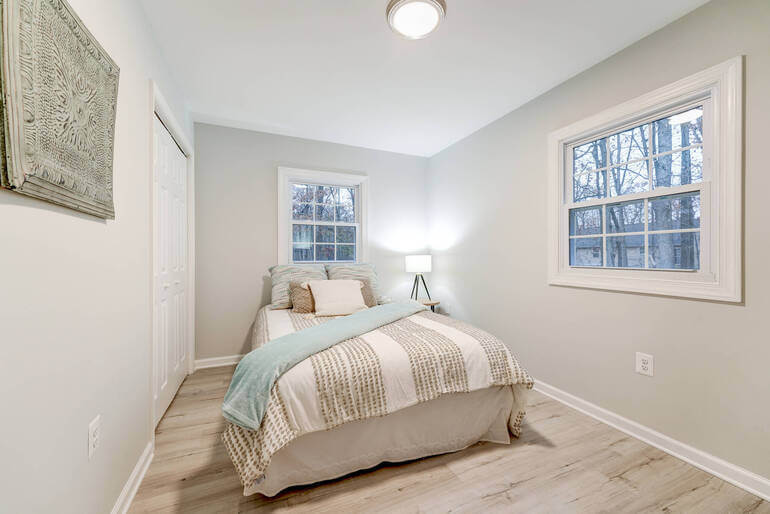

Example: Smoothing out the grainy texture in a photo to produce a clearer image:
9. Image Sharpening
Image sharpening means enhancing the edges and details in a photo to make it appear crisper and more defined.


Example: Sharpening the details of a room’s decor to make the overall image more striking:
10. Flash Ambient Blending
Flash ambient blending or simply flambient editing is about combining a flash-lit photo with a naturally lit (ambient) photo to balance the lighting and create a more realistic and evenly lit image.


Example: Merging a photo that was taken with flash and another without to ensure both the room and the view outside the window are well-lit:
11. Lens Correction
The definition of lens correction is adjusting the photo to correct distortions caused by the camera lens, such as barrel or pincushion distortion.
Example: Straightening curved lines in a photo caused by a wide-angle lens:


12. White Balance Adjustment
White balance adjustment means correcting the color temperature of an image to ensure that white objects appear truly white, rather than tinted by the lighting conditions.


Example: Adjusting the white balance in a photo taken under fluorescent lights to remove the blue tint:
13. Exposure Correction
Exposure correction is adjusting the brightness of a photo to ensure that it’s neither too dark (underexposed) nor too bright (overexposed).
This can go a long way in making property photos look more appealing. However, make sure not to make your images look unrealistic.


Example: Brightening a photo that appears too dark due to poor lighting conditions:
Have You Ever Thought To
Outsource Photo Editing?
Try it today with 10 free edits from three professional photo editors.
14. Panorama Stitching
Panorama stitching is about combining multiple photos taken from the same vantage point to create a wide-angle or panoramic view.
This helps capture the entire view of a property in a single image, which will leave your viewers in awe.
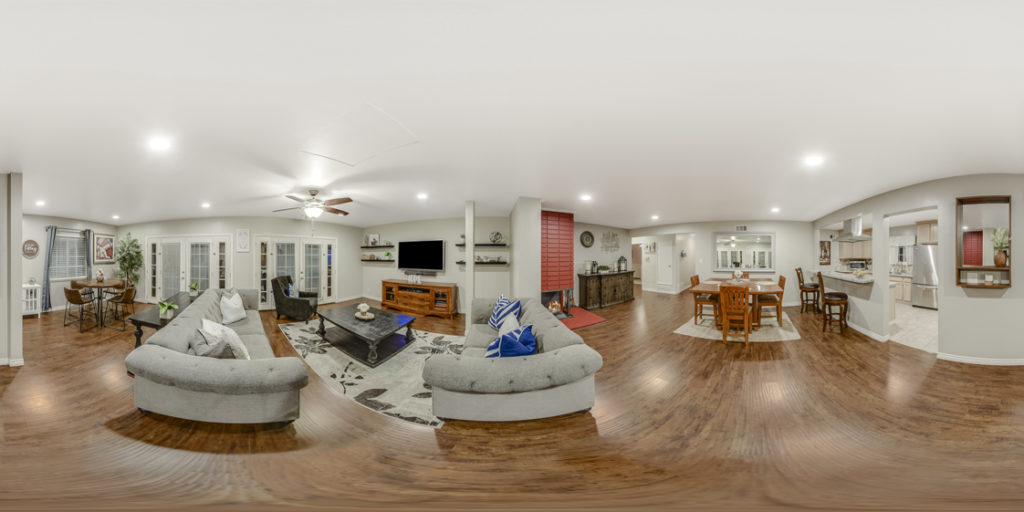
Example: Stitching together several photos of a backyard to create a seamless panoramic image:
15. Vignette Addition
Vignette addition means adding a subtle shadow or highlight around the edges of a photo to draw attention to the center of the image.
Example: Applying a vignette to an image of a cozy bedroom to focus the viewer’s attention on the bed:


16. Virtual Tours
A virtual house tour or 360-degree tour is a digital walkthrough of a property created by stitching together photos or videos, allowing potential buyers to explore the property online.
They are powerful because potential buyers can walk through the property room by room and get an idea of whether they want to visit the home.
Example: A 360-degree virtual tour of a home that viewers can navigate on a real estate website:
17. Walkthrough Videos
A walkthrough video is a video that takes viewers on a guided tour of a property, highlighting key features and providing a more immersive experience than photos alone.
Example: A video showing each room of a house, often with commentary or background music:
18. Single Property Websites

A single property website is a dedicated website designed to showcase a single property, often including photos, videos, floor plans, and other relevant information.
It’s a website created specifically to market a luxury home, featuring a gallery of edited photos, virtual tours, and more.
It gives real estate agents and Realtors a chance to boost local SEO and make their listing a bit more exclusive.
Example: In this demo of our single property website builder, you can see how easy they are to build and how they can look:
19. Custom House Portraits
A custom house portrait is an artistic representation of a property in watercolor or sketch, used for marketing, closing gifts, or as keepsakes for homeowners.

Example: A stylized digital painting of a home used as the main image on a real estate listing:
20. Photo Enhancement
Photo enhancement is a broad term encompassing various edits to improve the overall quality of a photo, including adjustments to color, brightness, contrast, and sharpness.


Example: Applying several edits to a property photo to make it more visually appealing:
21. Clone Stamp Tool
The Clone Stamp Tool is a photo editing tool in Photoshop used to copy pixels from one part of an image to another, often used to remove unwanted elements.

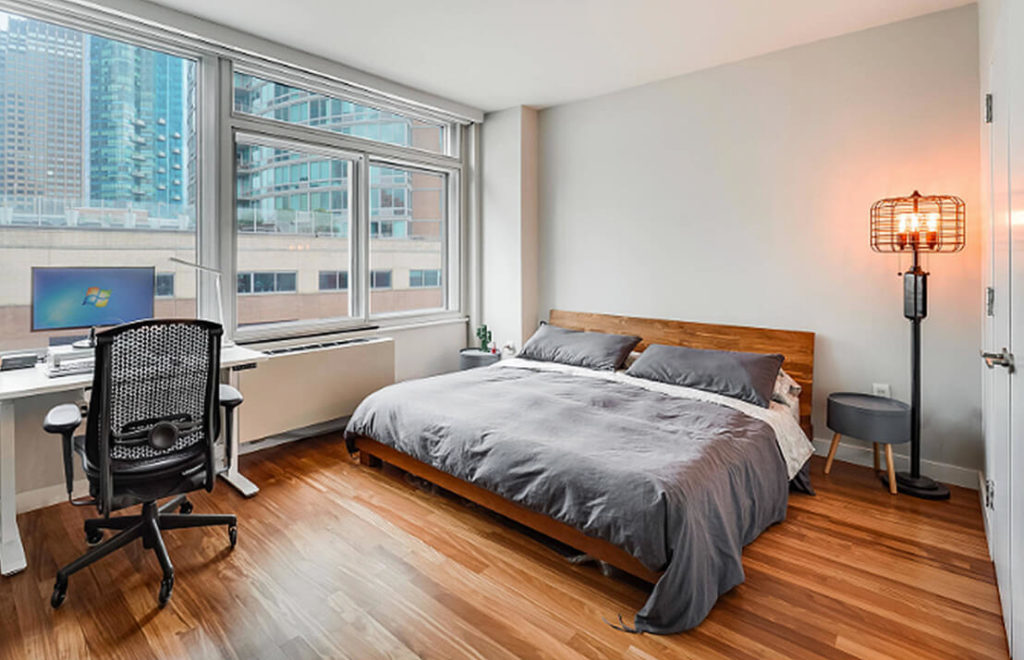
Example: Using the Clone Stamp Tool to remove messy cords in a photo:
22. Layer Masking
Layer masking is a technique in photo editing where parts of a layer are hidden or revealed to create composite images or blend different exposures.
Example: Blending a bright exterior shot with a darker interior shot using layer masking:


23. Color Cast Removal
Color cast removal entails eliminating unwanted color tints from photos, which can occur due to various lighting conditions.
This helps create a more realistic representation of the property.


Example: Removing the blue tint caused by incandescent lighting from an indoor photo:
24. Dodging and Burning
Dodging and burning are techniques used to lighten (dodge) or darken (burn) specific areas of a photo to enhance depth and detail.
Example: Lightening the shadows in a room’s corner while darkening the highlights on a bright window:


25. Object Removal
Object removal is similar to decluttering and entails editing out unwanted objects or elements from a photo to improve its composition and focus.
This can include:
- There’s an unwanted bicycle in the driveway
- There’s an ugly spot of peeling paint on the exterior of the house
- The photo of the bedroom has clothes strewn all over the carpet
- There is a big crack in the bathtub
- You failed to notice a person passing the house just as you took the shot


Example: Removing a parked car from a driveway in a property’s exterior shot:
26. Virtual Renovation
Virtual renovation is similar to virtual staging and means digitally altering photos to show potential renovations or upgrades, such as new flooring, paint colors, or even room layouts.
This can help potential buyers imagine themselves living in a house not yet renovated or completed.
Example: Editing a photo of an unfinished space to show what it could look like with modern furniture and decor:


27. Motion Blur Correction/Ghosting Elimination
Motion blur correction, also called ghosting elimination, is about reducing or eliminating the blur caused by camera movement during a shot, making the image appear sharper.
Ghosting can happen when shooting bracketed images for HDR photography, when there is movement between the photos, causing a specific object to shift from its original position to a new one.


Example: Correcting the slight blur or ghosting in trees from camera movement:
And there you have it!
Understanding these terms is essential for anyone involved in real estate photography or marketing.
Each technique plays a crucial role in ensuring that the property is presented in the best possible light, ultimately helping to attract more potential buyers and close deals faster.
Have You Ever Thought To
Outsource Photo Editing?
Try it today with 10 free edits from three professional photo editors.
Real Estate Photo Editing FAQ


Here are 10 frequently asked questions (FAQs) about real estate photo editing along with their answers:
1. What is real estate photo editing?
Real estate photo editing involves enhancing and modifying property images to make them more appealing to potential buyers.
This process can include adjusting lighting, correcting colors, removing unwanted objects, and even virtually staging rooms to present a property in the best possible light.
2. Why is photo editing important in real estate?
Photo editing is crucial in real estate because high-quality, well-edited photos can significantly influence a buyer’s first impression.
Edited photos showcase the property’s features, correct any imperfections in the original images, and make the listing stand out in a competitive market.
3. What are the most common photo editing techniques used in real estate?
Common techniques include perspective correction, HDR (High Dynamic Range) blending, sky replacement, twilight conversion, color correction, decluttering, and virtual staging.
These techniques help in making the property look more inviting and attractive.
4. How does HDR blending improve real estate photos?
HDR blending involves combining multiple images taken at different exposures to create a final image with balanced lighting and rich details in both shadows and highlights.
This technique is particularly useful for capturing interior shots where lighting can vary across the room.
5. What is virtual staging, and how does it benefit real estate listings?
Virtual staging is the process of digitally adding furniture, decor, and other elements to photos of empty rooms.
This helps potential buyers visualize the space’s potential, making it easier for them to imagine themselves living there, which can lead to quicker sales.
6. Can photo editing remove unwanted objects from real estate images?
Yes, photo editing can remove unwanted objects like clutter, personal items, or even distracting elements in the background.
This process, known as decluttering, helps create a cleaner, more appealing image of the property.
7. What is perspective correction, and why is it necessary?
Perspective correction adjusts the angles and lines in a photo to make sure that vertical lines appear straight, especially in architectural images.
This correction is important for creating a realistic and professional look, particularly when photographing buildings.
8. How can sky replacement enhance real estate photos?
Sky replacement involves digitally changing a dull or overcast sky to a more vibrant one, such as a clear blue sky or a beautiful sunset.
This enhancement can make exterior photos more appealing and can greatly improve the overall mood of the image.
9. What is the typical turnaround time for real estate photo editing services?
The turnaround time for real estate photo editing services typically ranges from 24 to 48 hours, depending on the complexity of the edits required and the number of photos being processed.
Some services, like PhotoUp, even offer expedited options for quicker delivery.
10. Is real estate photo editing expensive?
The cost of real estate photo editing can vary based on the type of edits needed and the number of images.
Basic edits like color correction and exposure adjustments may be relatively inexpensive (about $1.50 per image), while more complex services like virtual staging or twilight conversion can be more costly.
However, investing in high-quality photo editing is often worth it, as it can lead to faster sales and higher offers on the property.
So, sign up for a free PhotoUp account today and start outsourcing your real estate photo editing needs!
For a limited time, you’ll even get 10 free credits you can use however you please.
We hope this blog post helped you learn the 27 most common real estate photo editing terms. Before you go, you may also want to check out these related resources:






